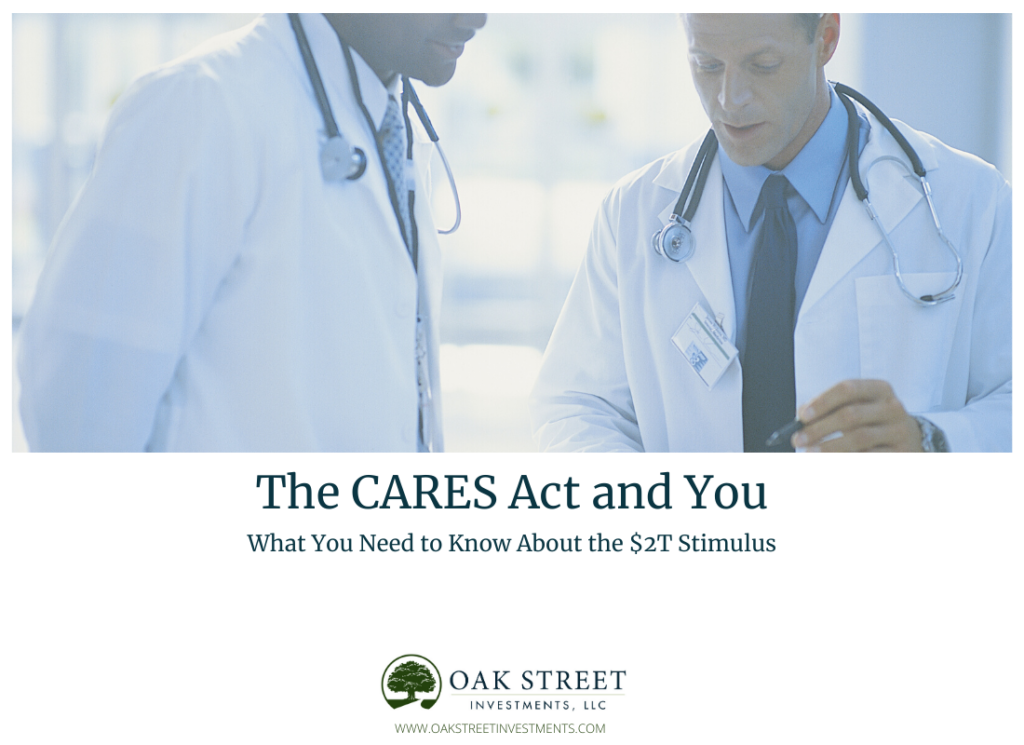
CARES Act – What You Need to Know
Last week the President signed into law the Coronavirus Aid, Relief and Economic Security Act (CARES Act), an economic stimulus package worth approximately $2 trillion. For those keeping track at home, this is roughly the amount spent on the 18-year war in Afghanistan, or the Gross Domestic Product of Italy, Brazil or Canada, and not far from that of the UK, France and India (each around $2.7T). So what does this enormous number mean for you? That depends on a number of factors, but here are the highlights most likely to be relevant to you.
- The Checks: Payments made to over 90% of taxpayers. $1200 for individuals, $2400 for married and additional $500 per child under age 17.
- The rebate is based on 2019 tax filings, if you’ve filed. If you haven’t, 2018 numbers are used so if you’ve had a significant decrease in AGI from 2018 to 2019, you should consider filing ASAP.
- From a tax standpoint, it’s provided as a refundable tax credit (meaning can actually create a credit for taxpayers with tax liability less than the rebate). Click here for an easy calculator to determine the amount/eligibility for a rebate.
- Payments are made as soon as possible. Social Security recipients will receive wherever they get their checks, and others who have their tax refunds/payments from direct deposits will receive it there. Others will receive to the last known address on file.
- Penalty-Free Distributions from Retirement Accounts: Up to $100K from IRAs or Employer Plans
- Must be due to the following: You or spouse/dependent diagnosed with Covid-19, experience adverse financial consequences as result of being quarantined, furloughed or laid off, or due to a number of stated reasons and unstated reasons the IRS may deem acceptable.
- May be paid back over 3 year period.
- RMDs Waived in 2020 – Includes IRAs, 401k, 403b, 457b
- Federal Student Loan Payments Deferred – Payments not required until September 30th, nointerest will accrue and will still count toward Public student loan forgiveness program
- Significant Changes to Unemployment Benefits: Extension of benefits, increased benefits, elimination of waiting period and more
- Small Business Owners (Less than 500 Employees): Significant opportunities under Paycheck Protection Program for fully guaranteed (forgivable) loans through SBA approved lenders.
- Deferral of Payroll Tax Payments: 50% will be due on 12/31 of 2021, remaining due 12/31/2022. Applies to self-employed too (only the employer portion).
Of course, this is just a high-level overview of some of the changes the Act makes to ease the uncertainty and economic strain posed by the virus. For more information, please reach out to me or your trusted financial professional.
Wishing you all good health.

[…] Thursday, April 16th, we learned of an additional 5.2 million Americans who lost their job last week, bringing the total to 22 million who have lost their jobs since the pandemic began, and wiping out all job creation since the Great Recession. To what degree the economy (and citizens) will suffer as a result of this pandemic remains to be seen. Millions of additional workers will find themselves furloughed or unemployed, and the unemployment rate will skyrocket to numbers few alive have ever seen (and even fewer can remember). Notably, this number will now include millions of “gig” and part-time workers who previously were not included in the unemployment rate, nor eligible for benefits as they are under the Cares Act. […]
[…] have taken swift actions to get money into the American economy, both directly to consumers via helicopter money (stimulus checks), Paycheck Protection Program (PPP) and EIDL Loans, and indirectly with […]
[…] past 12 months have brought significant tax changes including the CARES, Disaster, and SECURE acts, each with implications for retirement and tax planning. In […]